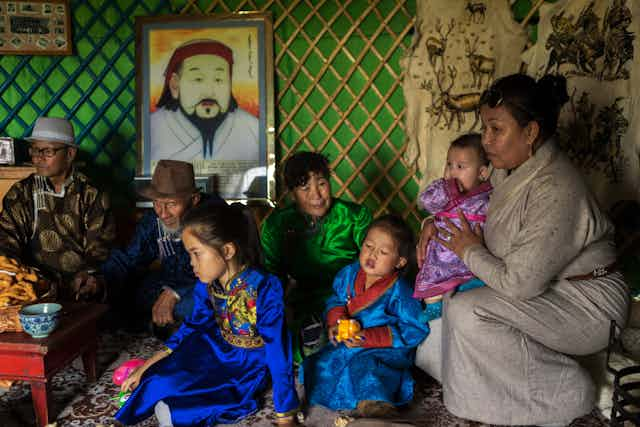In early September, Human Rights Watch reported widespread protests over the expansion of Mandarin Chinese teaching in Inner Mongolia’s schools. This new bilingual education policy threatens the Mongolian language and represents a broader policy of active assimilation that threatens the maintenance of linguistic diversity in China, more generally.
Inner Mongolia is an autonomous province in the People’s Republic of China. With its integration into mainland China in the early 20th century, the province’s Han Chinese population expanded, while its Mongolian population dwindled. Today, ethnic Mongolians form the largest minority in Inner Mongolia.
China’s constitution promotes the languages of officially recognized minority communities, including Mongolians, in education. Since its founding, the People’s Republic of China has generally supported a two-track education system: one for minority students who live in autonomous regions and counties based on their recognized, written native language, and one for the majority Han Chinese students, based on the nation’s official standard language, Mandarin.
My own research with children and families from greater China investigates the widespread yet deeply personal effects of assimilationist language policies.
Changing educational policies
This summer, the Inner Mongolian Education department announced changes to the province’s primary school curriculum. Currently, Inner Mongolia’s schools use Mongolian as the language of instruction for all subjects other than Chinese and foreign languages. The new policy will introduce Mandarin textbooks for three subjects: language and literature, morality and law (politics), and history.
This will significantly reduce the number of hours of Mongolian instruction each day. The new policy effectively shifts the meaning of bilingual education from Mongolian schooling that teaches Mandarin Chinese as a subject to Mandarin schooling that teaches Mongolian as a subject.
In the short term, local Mongolian teachers will have to adapt to using Mandarin, and face heightened job insecurity. In the long term, the change will transform students’ educational trajectories, with university-level majors and subjects that are now taught in Mongolian becoming obsolete.
In response, communities in Inner Mongolia have engaged in active protests. Alongside demonstrations in the streets, parents are refusing to send children to school, and children are running away from their classrooms.
The Southern Mongolian Human Rights Information Center links protests over the new policy to at least nine suicides and thousands of arrests. On Aug. 23, it reported the shutdown of Bainnu, China’s only Mongolian-language social media site, as a way of curtailing this political activism.
Minority rights
The news from Inner Mongolia is part of an ongoing struggle for language recognition and rights by minority communities in China. China is an ethnically and linguistically diverse country, home to 55 officially recognized minority ethnic groups and an estimated 297 languages. Extensive state support for the development of any minority language education is relatively rare. Indigenous communities in North America, for example, are today tasked with actively revitalizing their languages after the devastations of residential schooling and English-only curricula.
Over the past 20 years, China has radically expanded the use of standard Mandarin in schools. The news from Inner Mongolia seems to emanate from China’s so-called “Second Generation Ethnic Policy” that promotes national unity through cultural and linguistic assimilation. Scholars have noted that the endpoint of the Second Generation Ethnic Policy has already been borne out among Tibetans and Uighurs. Any overt display of social and cultural otherness — including linguistic diversity — is often read as a threat to national unity.
Colonialism and linguistic alientation
Despite anxieties over the loss of the Tibetan language, Tibetan families in China often choose to send their children to Mandarin rather than Tibetan schools, to ensure their socio-economic mobility.
Multilingual Tibetan children often self-identify as Mandarin speakers when they begin attending Mandarin schools and form peer relationships outside of the home. This shift in linguistic identification can cause ruptures in family relationships, with young children actively avoiding Tibetan language interactions with their parents and grandparents.
In 1986, Kenyan writer Ngũgĩ wa Thiong'o wrote of the consequences of his own colonial English education: “The colonial child was made to see the world and where he stands in it as seen and defined by or reflected in the culture of the language of imposition.”
When children lack access to mother-tongue education, they lose the opportunity to create a vision of their selves through their community’s shared worldview. More than 30 years later, children continue to be faced with this same paradox: success in school means alienation from their native languages, families and communities.

